Playboy are reopening their New York club - this is what it's like auditioning to be a bunny
We went through the American Idol-style elimination process to try to make it as a Playboy bunny
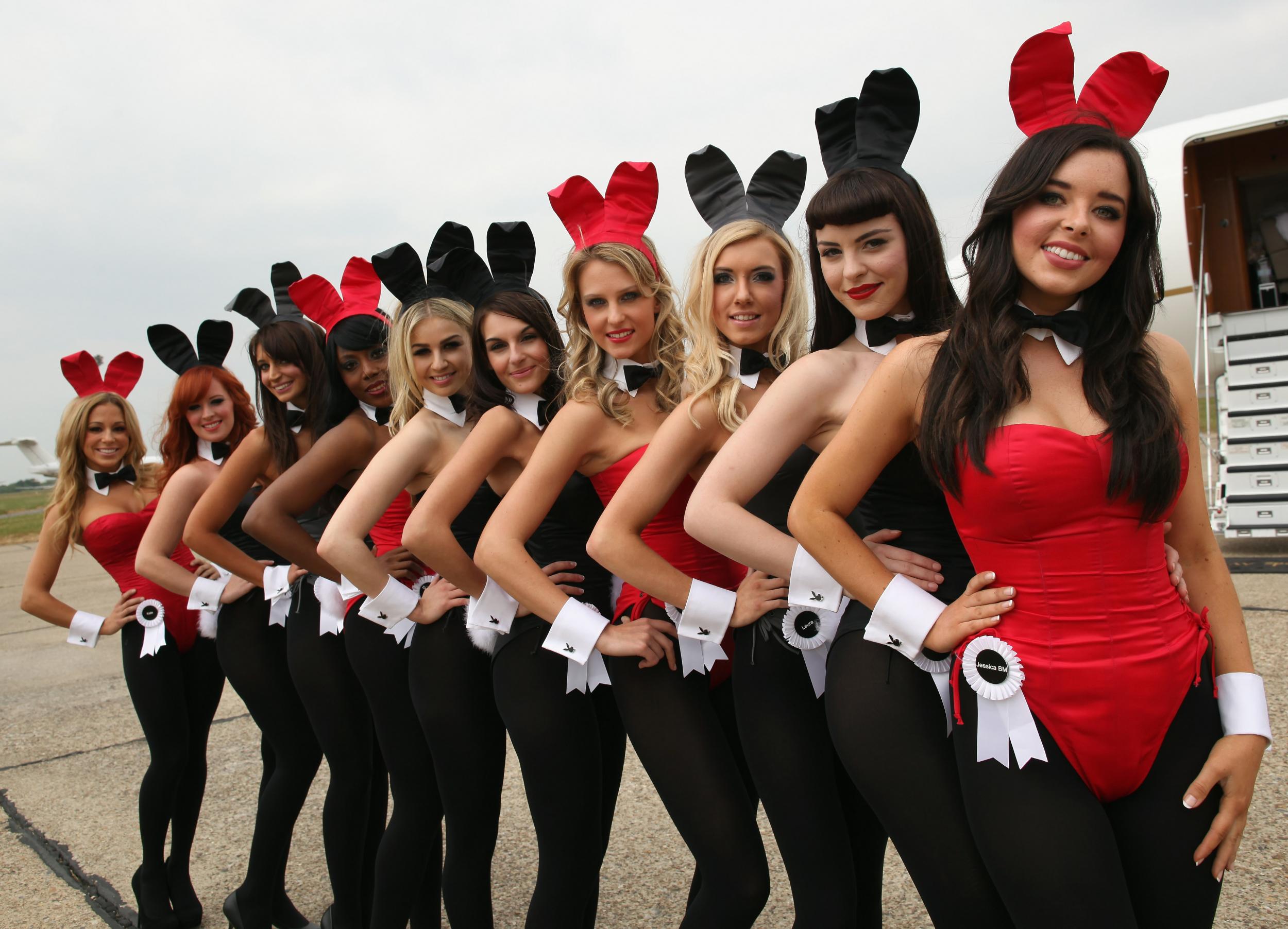
Your support helps us to tell the story
From reproductive rights to climate change to Big Tech, The Independent is on the ground when the story is developing. Whether it's investigating the financials of Elon Musk's pro-Trump PAC or producing our latest documentary, 'The A Word', which shines a light on the American women fighting for reproductive rights, we know how important it is to parse out the facts from the messaging.
At such a critical moment in US history, we need reporters on the ground. Your donation allows us to keep sending journalists to speak to both sides of the story.
The Independent is trusted by Americans across the entire political spectrum. And unlike many other quality news outlets, we choose not to lock Americans out of our reporting and analysis with paywalls. We believe quality journalism should be available to everyone, paid for by those who can afford it.
Your support makes all the difference.I walked past the entrance to the new Playboy club at least three times before realising I’d made it.
The building that houses the club – a “beautifully designed, sexy, elegant space,” according to a fawning New York Post preview – is a small hotel on the western end of midtown Manhattan, where theatre marquees turn to bowling alley signs and pretty much no one goes unless they’re travelling for business.
The hotel is called the Cachet Boutique Hotel NYC, but the sign outside drops the last two words, leading me to think I was walking repeatedly past a clothing store called “Cachet”.
When I finally made it inside the building, I was slightly disappointed. The standard hotel lobby was not what I expected from the breathless press coverage of the club’s dramatic return to New York City. It was certainly not what I expected when following an Instagram post advertising a casting call for bunnies – the Playboy club’s signature, scantily-clad servers.
"Do you have what it takes to wear the ears?” the Instagram ad asked me.
Inside the hotel's restaurant, I found a man who appeared to be in his late twenties, looking at the same time very bored and very amused with his situation. He asked if I was there for Playboy: “Sit down,” he said. “There’s some paperwork fill out.”
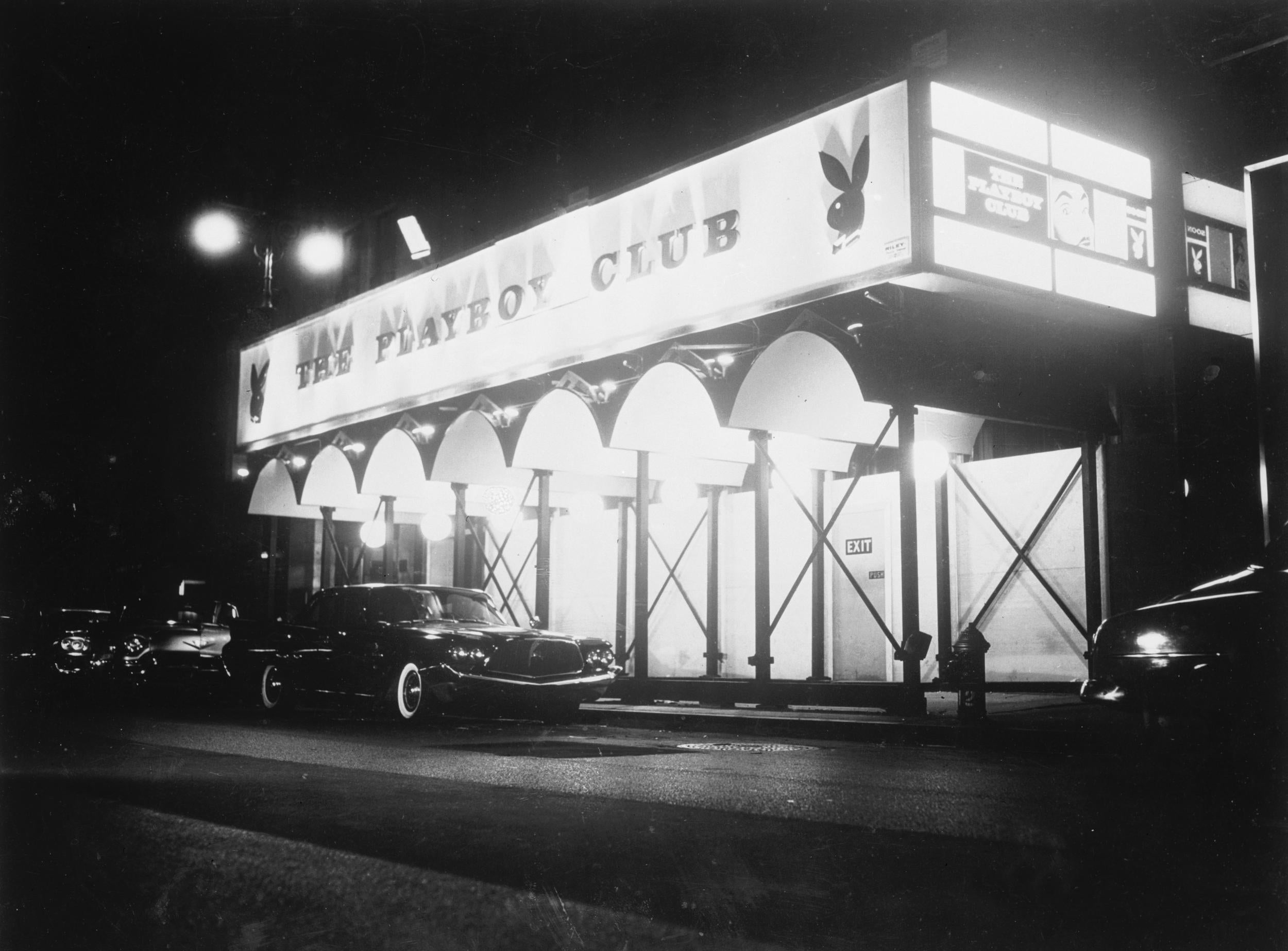
The first Playboy club opened in Chicago in 1960, as a place for wealthy fans of the brand – and of the bunnies – to hang out. The first New York club opened two years later, on a ritzy block between Fifth and Madison. Within years, the empire grew to 30 clubs around the world, boasting visitors like Frank Sinatra and Woody Allen, and regular performers like Bill Cosby.
Members of the original clubs received a physical key, complete with a bunny heady on top, that served as their ticket inside. Upon entry they were greeted by young, voluptuous women in satin bodysuits, who addressed them from a script: “Good evening, I am your Bunny [insert name]. May I see the Playboy key, please? ”
Inside the club were even more bunnies, standing in the handbook-mandated “Bunny Stance,” or reclining with one hip on the back of a chair in the “Bunny Perch". Per the bunny handbook, they were to take orders without using “crude and trite” phrases like ‘What’ll you have?’. When smoking, they were to take only small, occasional puffs, resting their cigarettes on the ashtray between drags.
This is the kind of world that celebrated women’s rights activist Gloria Steinem stepped into when she applied to be a bunny in 1963. Her resulting, two-part expose revealed the meagre wages the bunnies received, the ways they were objectified by their bosses, and the sexual harassment they suffered from patrons. To many, the article exemplified the misogyny behind the “sexual revolution” that founder Hugh Hefner claimed to be leading.
We're now in a very different world; women have gone from earning about 30 per cent of college degrees to more than half. They’ve claimed spots at the top of Fortune 500 companies, a growing number of seats in US Congress, and an increased focus on sexual harassment in the workplace.
All the while, Playboy’s stock has been slipping. The shine had already worn from the original clubs by the mid-1980s, when the Los Angeles Times declared the bunnies had gone “from risque to passe”. The New York and Los Angeles Clubs closed in 1986, and all of the remaining locations followed by 1991.
In recent years, US circulation of the magazine has dropped to less than 500,000 per issue – from a peak of 5.6m in 1975.
The magazine's formula, unchanged for decades, recently gave way to something of an identity crisis when it announced in 2015 that it would stop publishing nude photos. They were passe, the company's chief executive said.
In 2017, they were back. The original move was a "mistake", said the Mr Hefner's son Cooper.
But it felt like too little, too late. When Mr Hefner passed away that same year, Fortune magazine estimated he had little more to his name than the infamous Playboy Mansion where he lived and died.
My trip to the Cachet Boutique was an attempt to find out what a new Playboy club would look like in 2018 – and who exactly would want to work there.
I filled out my paperwork at a round, black table with about 10 other applicants. Most of them looked to be in their 20s or 30s, though it was hard to tell, as everyone was heavily made up. Some of the women were dressed for a formal job interview, while others had kept this particular job description in mind, opting for miniskirts and push-up bras.
They were all completing applications in silence, overseen by a young woman who managed to look stern despite sporting a Playboy logo crop top. When she walked away, I tried to strike up a conversation. What brought everyone to Playboy today?
One bleach-blonde woman with impressively large breasts said she had always been fascinated by the bunnies, and how glamorous they seemed. Another woman was a jewellery repair specialist who was looking for a change. Her current 9-5 made her feel like a robot, she said, and she wanted to do something more exciting.
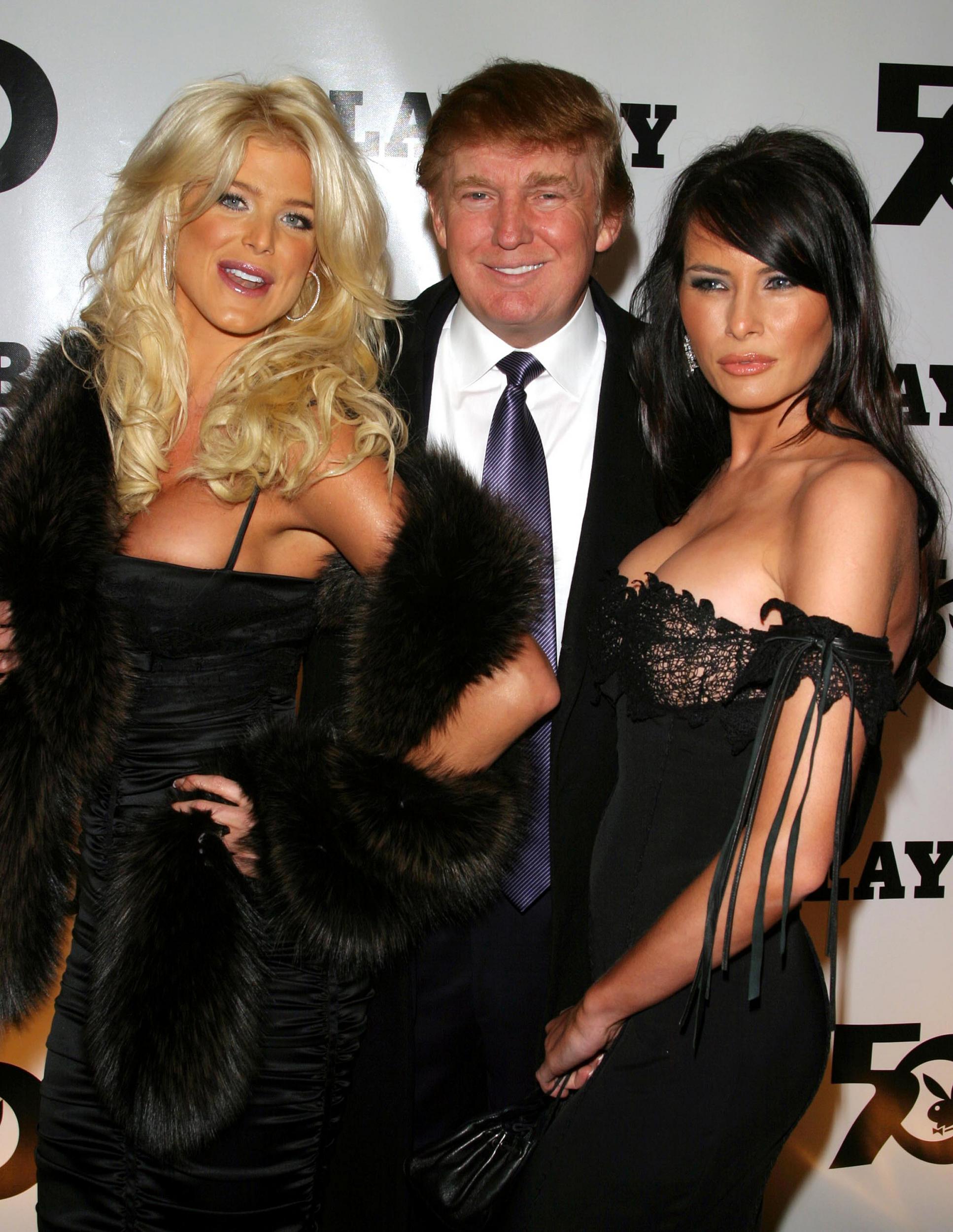
Pretty much all other applicants said they were just in it for the money. They’d all heard of the Playboy before, but none of them had ever dreamed of working there. Most of them had responded to the same Instagram ad I did. What little they knew of Playboy meant exactly one thing: Rich customers, and good tips.
One of the women – the curvy bleach-blonde – said she lived at home with her parents and her 11-year-old child. I asked if they were concerned about her working at a club known for its scantily-clad workers and handsy customers. She said no.
“It’s just like any other waitress job in New York, just in a bodysuit,” she explained. “And you get paid triple.”
The woman who worked in jewellery repair said much the same. Her boyfriend had protested the idea of her working at the club at first, but had relented when she explained how much money she’d make.
I was called away from my conversation by the woman in the Playboy crop top, who told me it was time for my interview. She pulled me into a cordoned-off section of the hotel lobby and introduced me to Bryce, who worked for the company in Los Angeles. Bryce was not wearing a crop top.
Bryce shook my hand, sat me down and immediately began reviewing my resume. I thought this would be my moment of truth: Unlike Gloria Steinem, I had decided to put my real name, real education, and real work experience on my resume. The only thing I has left out – for obvious reasons – was my two years as a reporter and my stint at Ms magazine. Wouldn't he would be concerned by my lack of recent work experience?
He was not. Bryce just curious about why I wanted to work at Playboy (“I just love working in hospitality,” I lied,) and what my serving experience was like. I told him I didn’t have much.
“That’s ok,” he said. “It doesn’t really matter.”
Then he told me to go upstairs, where I would speak to a larger group of people from Playboy. Those people would tell me more about the job description, he said, before offering up his own summary of the role: “mainly doing bottle service and elevating the guests; making them feel special”.
Then he handed me off to his associate, another woman in a Playboy crop top, who led me to the hotel elevator.
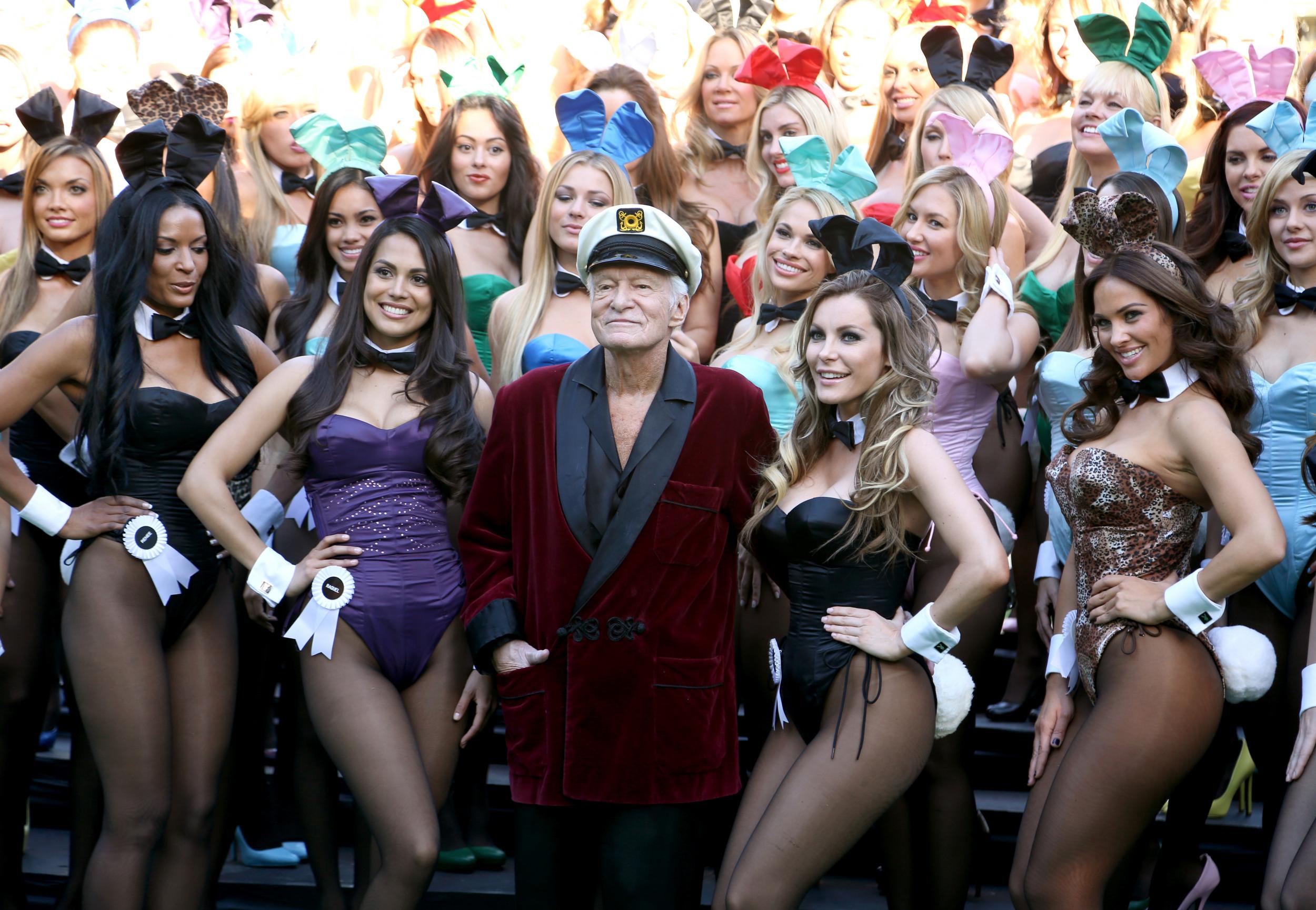
When I stepped out of the elevator, it was into what felt like a giant terrarium. Sunlight spilled in through a glass roof, illuminating a variety of large, potted plants and what looked like some very expensive beach chairs. To my right was another, smaller glass room, where a group of people in business suits were sitting around a long table. In front of me was yet another woman in a Playboy t-shirt, who energetically beckoned me forward.
The woman’s name was Alexis, and she was a bunny – something I probably could have gathered from her preternaturally shiny blonde hair, piercing blue eyes, and what looked like a fake pair of breasts. Alexis’s first gig was working Playboy's party after the White House Correspondents Dinner this year, and she’d been with the company ever since. Fake lashes fluttering, she told me she loved working with Playboy, and couldn’t imagine doing anything else. I almost believed her.
After a few minutes of forced conversation with Alexis, a middle-aged man in a dark grey suit emerged from the smaller room. With him was a woman I recognised as another applicant from downstairs. He told Alexis to show her to the elevator, and invited me inside.
From what I’d gleaned from Alexis, the people inside the room were an assortment of hotel managers, club managers, and Playboy executives – the people tasked with shepherding Playboy’s brand into the world of 2018.
These days, the business is run by Cooper, 26 – the same one who decided to bring nudity back to the magazine last year. According to sources in the New York Post, he wanted New York’s Playboy club to focus on “millennial luxury” – which, to be honest, sounds a lot like the luxury of generations past.
The new club appears to be focused on familiar themes: Private rooms, bodysuit-sporting bunnies, and wealthy clientele. The New York Post’s source – who sounded suspiciously like Mr Cooper himself – boasted that the new club’s membership pulled from “Wall Street, Hollywood and foreign nations”. The source added: “We didn’t expect so many members before our marketing began. We need to curate our list.”
But the company is also wary of the current, post-#metoo moment. In a summer marketing blitz around the club’s reopening – at the same time Bill Cosby was convicted of sexual assault and celebrities started abandoning Woody Allen’s movies in droves – publicist Jocelyn Scanlon told reporters that the Playboy brand had always stood for “freedom of choice, freedom of sexuality, freedom from discrimination”.
"In this time, the Playboy brand is priding itself as a brand holding women on a high pedestal, never objectifying them, and giving them a platform, a place to speak their minds,” she said.
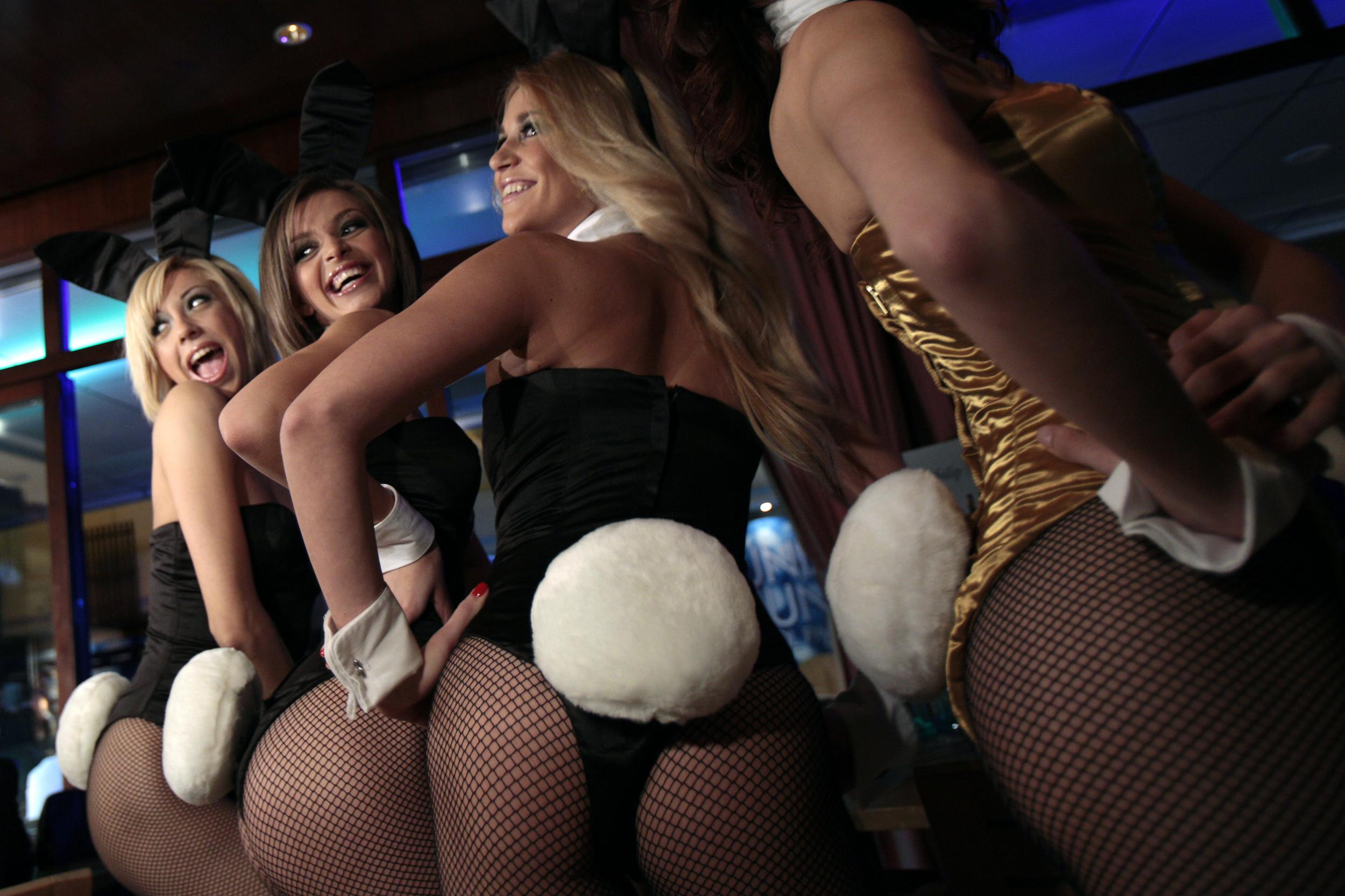
My interviewers seemed less interested in putting women on a pedestal than, as Bryce had put it, “elevating the guests". They seemed especially interested in my job in Los Angeles, where I had briefly booked models for an event-planning company that exclusively hired hot people as waitstaff. The interviews wanted to know what our clientele was like, one man explained. At the Playboy club, I could expect to be "serving the one percent”.
Apparently my experience with the one per cent was satisfactory, because when the man in the grey suit escorted me out, he pointed me not to the elevator, but to a room in the back. There, he said, I would “take a few pictures”.
A jolt of panic shot through me when I stepped inside the room. Spread out across a hotel bed were dozens of corseted black leotards, bow ties, cufflinks, and black satin bunny ears – the backbones of the Playboy bunny uniform. I would be “taking some pictures,” it seemed, in the uniform itself.
An attendant handed me a pair of black stockings and told me to get changed. She said she didn’t work for Playboy, but was just a contractor here to help with the pictures. I asked her how many aspiring applicants she’d taken photos of in the last two days. She said at least 75.
I wiggled myself into the stockings, and then into the leotard, which I was told to hike up as far as I could. I thought briefly of the Bunny Stance, and suddenly realised why no one at the clubs was allowed to sit down.
Then I was thrust out into the stark sunlight of the back porch, where another attendant told me to strike a “Superwoman” pose for the camera. I stared at her like a deer caught in headlights, and dropped my arms to my sides.
“Don’t you know what Superwoman stands like?” the woman asked. Embarrassed, I rearranged my limbs into the familiar, hands-on-hips stance.
The woman took several photos of me like that, and then from the side, and then from a 45-degree angle, before I was finally allowed back inside. In the safety of the changing room, I asked the attendant to take a picture (“Just one, please? For my boyfriend?”) to which she finally agreed, on the condition that I could not post them anywhere.
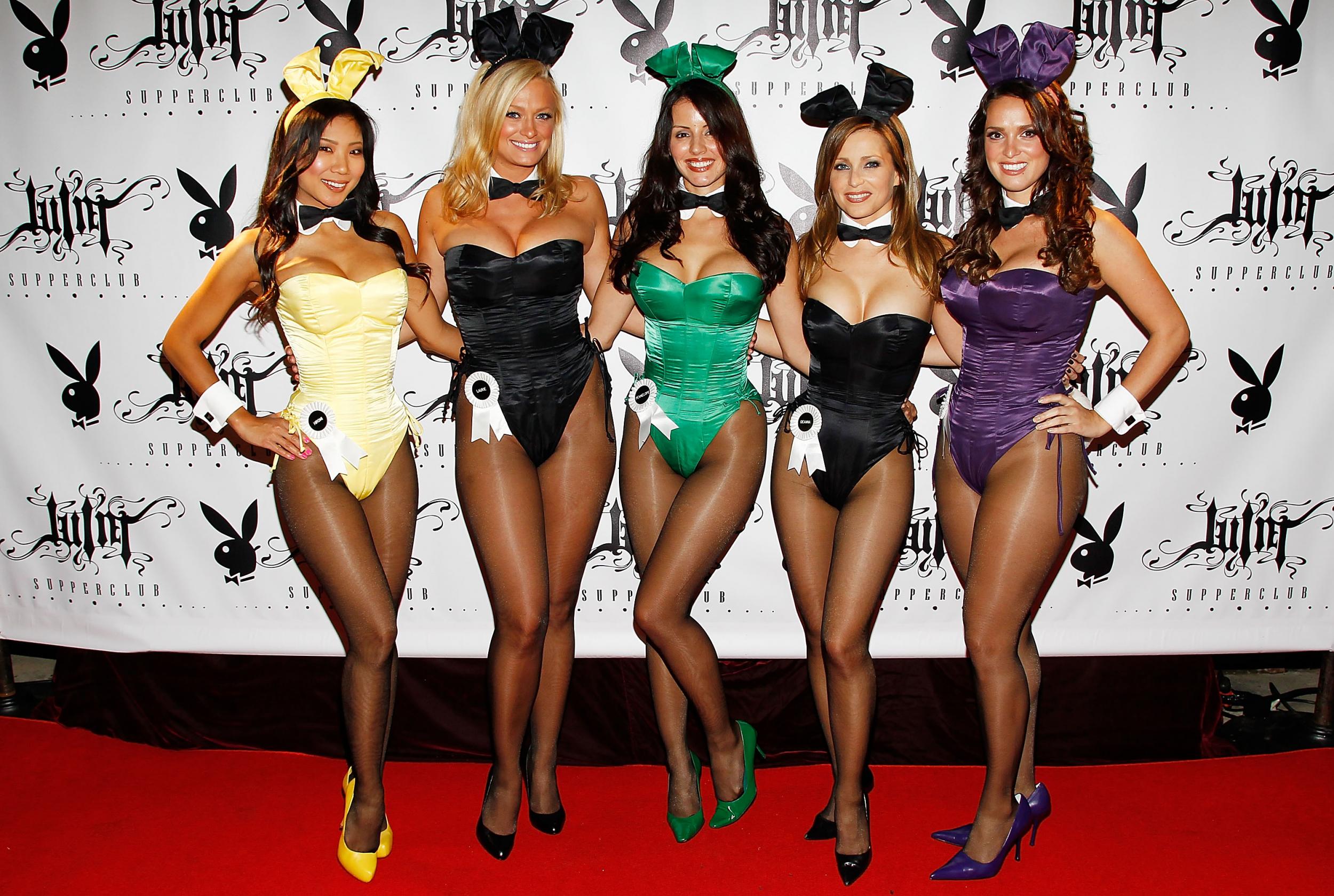
On my way out, I ran into another applicant – a blue-eyed blonde in a denim mini skirt. She was just leaving the group interview and being led to the elevator by Alexis. Her shoulders slumped immediately when we got inside.
“I don’t think I got it,” she said.
“Why not?” I asked.
“Because I didn’t get to go to the back room!”
It was then that I realised the entire process had been some kind of large, American-Idol-style elimination process, starting with Bryce’s 30-second resume review and ending with an unexpected hotel-room photo shoot for the chosen few.
“Oh,” I said. “They seemed really busy back there. Maybe they want to have you in another day?”
We rode the rest of the way down in awkward silence, and I was relieved to see the friendly, bleach-blonde mum in the lobby when I got off. She was waiting for her friend, who had been sent upstairs without her. She seemed unperturbed by the situation, and was entertaining herself by watching a World Cup game with the hotel bartender.
On my way out, I looked through the photos of myself crammed into the bunny uniform. I thought about how Playboy had gone from something your brother hid under his bed, to the kind of place your parents and boyfriend wouldn’t really care about you working.
I thought about how the company once credited with starting a sexual revolution was now scrambling to respond to an anti-sexual-harassment movement. And I thought about how Gloria Steinem was the one now making documentaries for Vice, while a Playboy club-themed TV show was booted from network television for low ratings.
In the end, I didn’t get the job. In fact, I didn't even send the pictures to my boyfriend. I sent them to my mom, who thought they were hilarious.
Join our commenting forum
Join thought-provoking conversations, follow other Independent readers and see their replies
Comments